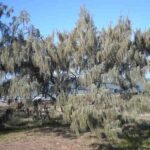Rainy Season In Philippines – Embracing the Rain

The Philippines, a tropical archipelago in Southeast Asia, is known for its vibrant culture, stunning beaches, and warm hospitality. But ask any local, and they’ll tell you: half of the year, life is accompanied by the steady rhythm of raindrops. Welcome to the rainy season.
When Does the Rainy Season Begin?
The rainy season in the Philippines typically starts in June and lasts until November, peaking between July and September. Governed by the southwest monsoon—locally known as habagat—this period brings heavy rainfall, cooler temperatures, and occasional typhoons.
While some may see it as an inconvenience, the rainy season is a vital part of the country’s ecosystem and agricultural cycle.
The Beauty in the Downpour
Rain transforms the landscape. Fields turn lush green, waterfalls swell with power, and the air feels cleaner and cooler after a long dry spell. For many Filipinos, there’s a sense of comfort in the sound of rain on the roof—often a thin sheet of galvanized metal—evoking feelings of nostalgia and calm.
Cities slow down, umbrellas bloom like flowers on the street, and the ever-present taho vendor still makes his rounds, steam rising from his warm silken tofu treat.
Challenges of the Season
Despite its charm, the rainy season comes with its fair share of challenges. Flooding is common in low-lying areas, especially in urban centers like Manila. Classes and work may be suspended during heavy downpours or typhoons, and landslides are a risk in mountainous regions.
The Philippines experiences an average of 20 typhoons a year, many occurring during this season. Government agencies like PAGASA (Philippine Atmospheric, Geophysical and Astronomical Services Administration) play a key role in issuing weather advisories and alerts to ensure public safety.
How Locals Adapt
Filipinos are remarkably resilient and adaptive. Rain boots, raincoats, and umbrellas become everyday essentials. Public transportation continues—albeit slower—and businesses operate with flexibility. It’s not uncommon for people to bring extra clothes or keep plastic bags handy for soaked belongings.
In more rural communities, farmers rely on the rains to nourish rice paddies and other crops. While too much rain can be destructive, a well-timed downpour is a blessing.
Rainy Day Comforts
Rainy days are perfect for curling up indoors. Filipinos love to indulge in hot soups and stews during this time—sinigang, a sour tamarind-based soup, is a rainy day favorite. Champorado, a chocolate rice porridge often served with dried fish, is another comfort food that warms the soul.
For many, rainy nights are best spent at home, wrapped in a blanket, watching teleseryes or listening to old OPM ballads as the rain taps gently on the roof.
The rainy season in the Philippines is more than just weather
It’s a cultural rhythm that shapes daily life. It brings challenges, yes, but also beauty, introspection, and a slower pace that many come to appreciate. Whether you’re visiting or living in the country, learning to embrace the rain is part of understanding the heart of the Filipino spirit.










